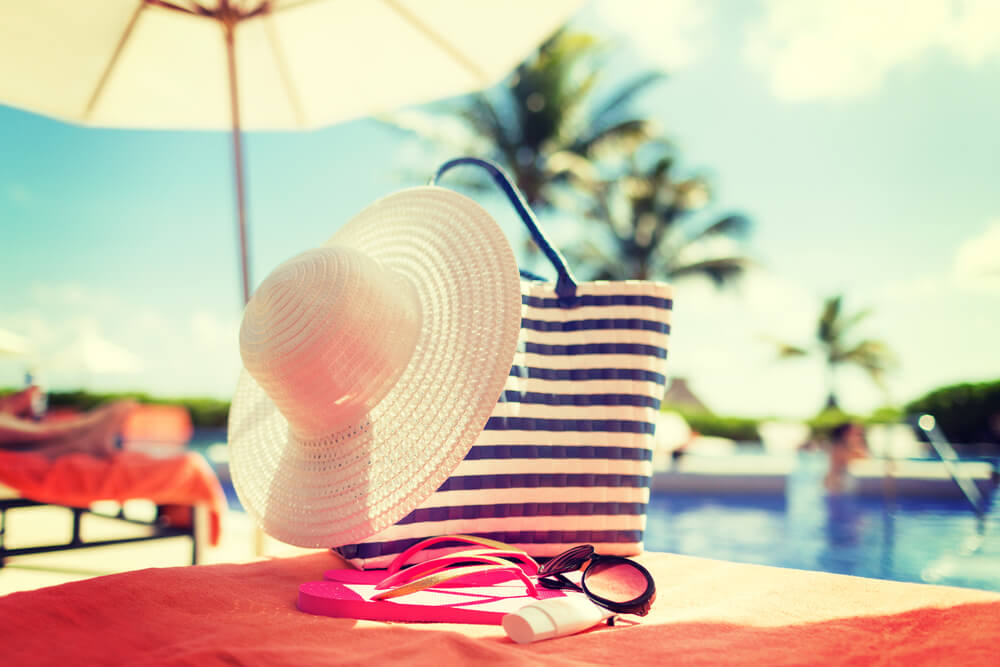Summer Skin Safety: Protect Yourself While Enjoying the Outdoors

08/21/2015 | Categories: Outdoor Living, Sunshine Fun Pools, Swimming Pools
Summer Skin Safety: Protect Yourself While Enjoying the Outdoors | Sunshine Fun
School vacation may be over, but summer is still going strong! Practice skin safety during the sun’s most intense season.
Just because the kids are starting back to school doesn’t mean that summer is over. August and September are usually the hottest months of the year in the Brazos Valley, and the rays of the sun are at their most intense, therefore most damaging. Between cooling off in the pool on weekends, playing outdoors during recess and PE, and simply running errands around town, you and your family may be exposed to these damaging rays more than you realize. Brush up on your sun care know-how, and take steps to maintain your family’s skin safety.
It is widely known that people who get a lot of exposure to ultraviolet rays are at greater risk for skin cancer. However, avoiding the sun altogether (if it were even possible!) is not a healthy practice. Our bodies need sunlight on the skin in order to produce vitamin D, a vital substance that boosts the immune system, actually helps fight cancer, and is nearly impossible to get enough of simply from food. Regular ray time is also a proven, powerful tool in maintaining a positive outlook and fighting depression. Not to mention that outdoor exercise can be an enjoyable component of whole-body health. So how do you reap the benefits of sun exposure while practicing skin safety?
Know your limits
Your sun exposure time limits, that is! The simplest protection method is to set and stick to a time limit for direct sun exposure. Experts recommend covering up and seeking shade after about half the time it takes your skin to turn pink and begin to burn. This time can vary greatly by person depending on skin tone, so close monitoring and experience may be the only ways to safely set limits. You should know that substances such as water, sand, and even snow reflect UV rays and actually increase the levels of UV exposure to your skin. This means that you probably need to allow less sun time in the pool or at the beach, for example, than you may while mowing the lawn or taking a walk.
Choosing long sleeves and pants or long skirts in lightweight fabrics can often feel cooler than shorts and sleeveless tops because they protect skin from direct sun. Bear in mind though, that if you can see through the fabric, light can get through, so not every layer over the skin is a guarantee of protection. Tighter weaves and darker colors offer more protection, and the new garments specifically designed or treated to block UV rays may be good options. Hats with brims of at least 3 inches all the way around can provide excellent protection for most commonly burned areas such as face, scalp, ears and neck, and sunglasses are helpful for guarding eyes and the delicate skin around them.
Be Sunscreen Smart
Sunscreen can be an important tool, but many do not realize that it is just a filter. Since it does not block all UV rays, it should not be your only means of skin safety. It should also not be used as a justification for prolonging sun exposure. When you do use sunscreen, choose one with at least 30 SPF and be sure to use proper amounts, especially on areas that get the most sun such as your head, shoulders and chest. Read the label thoroughly, and be sure to reapply as instructed- generally every two hours, and sooner if swimming or sweating.
If you are concerned by the chemical components in personal care products, you may be happy to learn that there are more natural options available. In a 2014 review of over 2000 sunscreen products, the Environmental Working Group found that a whopping 75% actually contain toxic chemicals believed to increase your risk of cancer and other health issues! Natural health experts recommend using mineral-based sunscreens with either titanium dioxide or zinc oxide as their primary active ingredient. However, not all mineral sunscreens are created equal, so it pays to be educated and choose the best available products.
Eat for Health
In conclusion, did you know you can combat oxidative damage (a leading contributor to cancer risk) with food? It’s true! Simply by choosing the right food and drink, you can protect your skin and decrease your risk of cancer. Eating substances such as resveratrol (found in red grapes, red wine and blueberries), Omega-3 fatty acids (in fish, flaxseeds, and chia seeds), Catechins (in green tea), Astaxanthin, vitamin E, and beta-carotene arms the body to protect itself. After all, food is the best medicine!
For more topics of interest to pool and spa owners, as well as outdoor living tips and advice, like us on Facebook or Twitter!

















